Notes
- 1 2 3 Jeffrey, Robin (1976). The decline of Nayar dominance: society and politics in Travancore, 1847-1908. Holmes & Meier Publishers. p. 337. ISBN 0841901848.
Sarukkai Gopalachari | |
|---|---|
| Diwan of Travancore | |
| In office 16 August 1906 –26 October 1907 | |
| Monarch | Moolam Thirunal |
| Preceded by | V. P. Madhava Rao |
| Succeeded by | P. Rajagopalachari |
Diwan Bahadur Sarukkai Gopalachari (born 16 August 1850),or Gopalacharyar,was an Indian lawyer and administrator who acted as the Diwan of Travancore from 16 August 1906 to 26 October 1907.
Gopalachari was born into a Vaishnavite Brahmin family in Sarukkai,Madras Presidency in the year 1850. [1] He graduated in law and worked as a vakil in Madurai before being appointed a sub-judge on 21 March 1885. [1] In June 1903,he was confirmed as officiating district and sessions judge.[ citation needed ] Gopalachari was serving as District Judge of Tinnevely when he was appointed Diwan of Travancore in 1906. [1]

Pattom A. Thanu Pillai was an Indian politician and freedom fighter who served as the 2nd Chief Minister of Kerala from 1960 to 1962. He was considered as a central figure in Kerala politics.
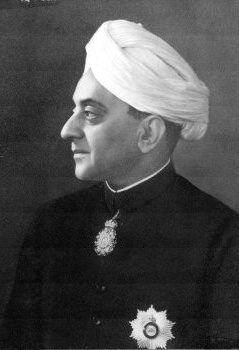
Dewan Bahadur Sachivottama SirChetput Pattabhiraman Ramaswami Iyer, popularly known as Sir C. P., was an Indian lawyer, administrator and politician who served as the Advocate-General of Madras Presidency from 1920 to 1923, Law member of the Executive council of the Governor of Madras from 1923 to 1928, Law member of the Executive Council of the Viceroy of India from 1931 to 1936 and the Diwan of Travancore from 1936 to 1947. Ramaswami Iyer was born in 1879 in Madras city and studied at Wesley College High School and Presidency College, Madras before qualifying as a lawyer from the Madras Law College. He practised as a lawyer in Madras and succeeded S. Srinivasa Iyengar as the Advocate-General of the Madras Presidency. He subsequently served as the Law member of the Governor of Madras and of the Viceroy of India before being appointed Diwan of Travancore in 1936.
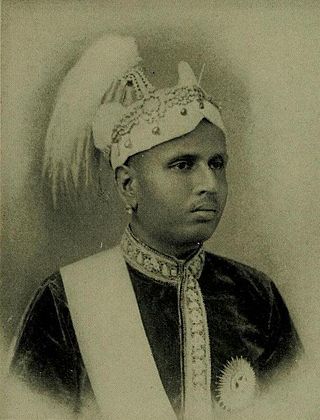
Sir Moolam Thirunal Rama Varma (1857–1924) was Maharajah of the princely state of Travancore between 1885 and 1924, succeeding his uncle Maharajah Visakham Thirunal (1880–1885). Moolam Thirunal is considered as the first in Indian to implement the concept of public participation in governance through the formation of Travancore Legislative Council.

Thanjavur Marathi people, are a Thanjavur Marathi-speaking ethno-linguistic group, who reside in the central and northern parts of the Indian state of Tamil Nadu. They are the descendants of Marathi administrators, soldiers and noblemen who migrated to this region during the rule of the Thanjavur Maratha kingdom. Thanjavur was a Maratha kingdom in Tamil Country, until the British East India Company dethroned the last Thanjavur Maratha king, Shivaji of Thanjavur. It was founded by Maratha Warrior King Chatrapati Shivaji's half-brother, Ekoji alias Venkoji Rajē Bhonsalē. The Kshatriyas use Maratha, while the Brahmins use the surname Deshastha.
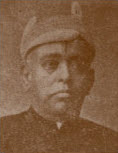
Diwan Bahadur Sir Perungavur Rajagopalachari, KCSI, CIE, also spelt in contemporary records as Sir P. Rajagopala Achariyar, was an Indian administrator. He was the Diwan of Cochin State from December 1896 to August 1901 and of Travancore from 1906 to 1914.
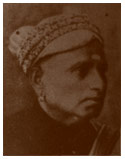
S. Shungrasoobyer (1836–1904), also known as Sankara Subha Iyer or Sankara Stibbaiyar, was an Indian administrator who served as the Diwan of Travancore State from 1892 to 1898.

Sir Amaravati Seshayya Sastri, or Sashiah Sastri, was an Indian administrator who served as the Diwan of Travancore from May 1872 to 4 May 1877 and as the Diwan of Pudukkottai from 1878 to 1894. He is credited with having modernized the city of Pudukkottai.
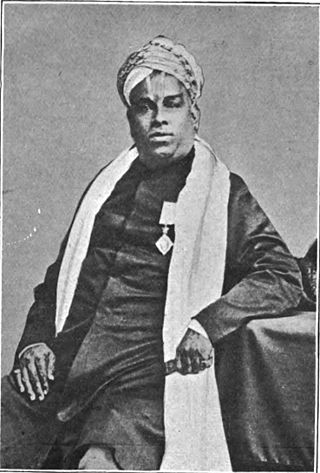
Vembaukum RamiengarCSI was an Indian civil servant and administrator who served as the Diwan of Travancore from 1880 to 1887.

SirVishwanath Patankar Madhava Rao was an Indian administrator and statesman who served as the 17th Dewan of Mysore from 1906 to 1909 and that of Baroda from 1910 to 1913.

Diwan Bahadur V. S. Subrahmanya Iyer was an Indian administrator who served as the Diwan of the princely state of Travancore from 1929 to 1932.
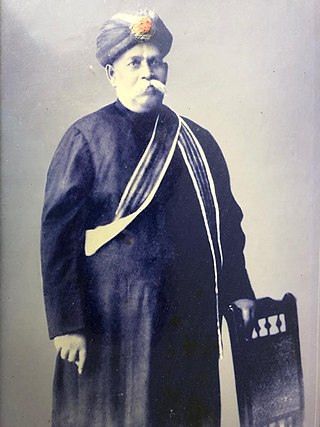
Diwan Bahadur Sir Veeraraghavapuram Nagam Aiya was an Indian pioneer, historian, civil servant, and chronicler who served as the Dewan in the erstwhile princely state of Travancore.
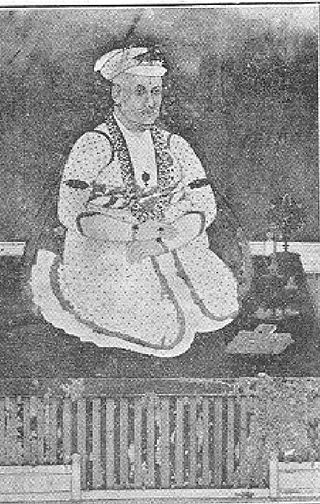
Rai Raya Rai Venkata Rao, was an Indian administrator and statesman who served as Diwan of Travancore 1821–1829 and 1838–39. He was the father of R. Raghunatha Rao, brother of R. Ranga Rao and paternal uncle of Sir T. Madhava Rao.
Diwan Bahadur Sir Mannath Krishnan NairKCIE (1870–1938) was an Indian politician from the Indian National Congress and later, Justice Party who served as a member of the Madras Legislative Council and later, executive council of the Governor of Madras. He also served as the Chief Justice of Travancore High Court and later Diwan of Travancore from 1914 to 1920(?)
M. R. Ry. Dewan Nanoo Pillai (1827–1886) was a Travancorean statesman who served as the Diwan of Travancore from 1877 to 1880.
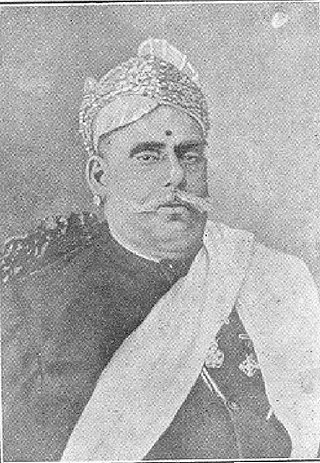
Tanjore Rama Rao, was an Indian administrator who served as the Diwan of Travancore from 1887 to 1892. V. Nagam Aiya, in his 1906 Travancore State Manual calls him "the most popular Diwan in recent times". Rama Rao was a cousin of Rajah Sir T. Madhava Rao and Diwan Bahadur R. Raghunatha Rao. All three were grandsons of Gundopanth. Rama Rao's mother Sonamma Bai was Gundopanth's daughter, while Diwan Bahadur R. Raghunatha Rao's father R. Venkata Rao and T. Madhava Rao's father R. Ranga Rao were Gundopanth's sons.

Diwan Bahadur Kanchi Krishnaswamy Rao (1845–1923) was an Indian civil servant, judge and administrator who served as the Diwan of Travancore from 1898 to 1904.
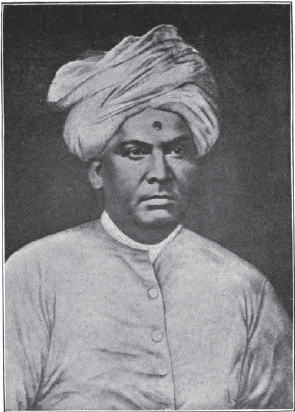
Calamur Viravalli Runganada Sastri was an Indian interpreter, jurist, civil servant and polyglot who was known for his mastery over Indian and foreign languages alike in both classical and vernacular forms, as well as his general erudition and command of jurisprudence. In a time where higher positions were foreclosed to Indians, Sastri, in recognition of his brilliance, was nonetheless appointed a Fellow of the University of Madras, rapidly thereafter becoming the first native Indian appointed to the judicature as a judge of the Small Claims Court, and, later, to the Madras Legislative Council.

General John Munro of the H.E.I.C.S was a Scottish soldier and administrator who served as Resident and Diwan of the States of Travancore and Cochin between 1810 and 1819.
Diwan Bahadur Thodla RaghavaiahCSI was an Indian administrator who served as the Diwan of Travancore from 1920 to 1925. He was a favourite of the Maharaja Moolam Thirunal. His refusal to allow low-caste to enter Hindu temples is believed to have led to the Vaikom Satyagraha.
Diwan Bahadur Dr. Sarukkai Rangachari was a medical practitioner, surgeon and gynaecologist from the Madras Presidency.